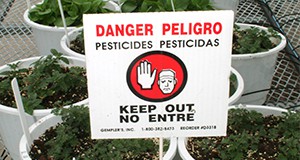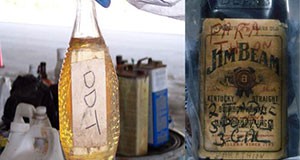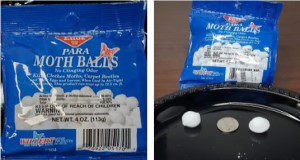Mothballs are widely available for purchase and familiar to many people. However, mothballs are one of the most misused products, and their misuse can cause harmful effects to people or the environment. This new 4-page publication of the UF/IFAS Pesticide Information Office will give the basics about what mothballs are, where they can be used, and their status as a pesticide. Written by Brett W. Bultemeier.
https://edis.ifas.ufl.edu/pi289
Tag: Pesticide Regulations and Safety
Tank-Mixing Pesticides without Disasters
Tank-mixing several pesticides is a common practice in conducting pest control. Tank mixes can consist of much more than just pesticides, such as fertilizers, micronutrients, and adjuvants. However, applicators must be aware of potential problems given that there are so many potential combinations when combining these products. Manufacturers cannot possibly test for all of these combinations, so both chemical and physical incompatibility are a concern with the practice. This new 4-page document, written by Frederick M. Fishel and published by the UF/IFAS Pesticide Information Office, describes some common-sense practices to help overcome costly tank-mixing errors.
https://edis.ifas.ufl.edu/pi285
Quick Reference Guide to the Worker Protection Standard (WPS) as Revised in 2015
The Worker Protection Standard (WPS) is a regulation originally issued by the US Environmental Protection Agency (EPA) in 1992 and most recently revised in 2015. This eight-page reference guide gives an overview of the 2015 revisions. Written by Frederick M. Fishel, and published by the Agronomy Department.
http://edis.ifas.ufl.edu/pi270
First Aid for Pesticide Exposure

Pesticide poisoning is a commonly under-diagnosed illness. This five-page fact sheet describes how to recognize the early symptoms of pesticide exposure and provide basic first aid for the treatment of victims. This fact sheet explains how to provide initial treatment in the case of pesticide exposure on the skin, in the eye, through inhalation, and in the mouth or swallowed. Written by Frederick M. Fishel, and published by the Agronomy Department.
http://edis.ifas.ufl.edu/pi256
Pesticide Storage: Keep It in the Container
 Accidents happen quickly, and so do accidents with pesticides. Anyone storing pesticides, especially in the presence of children, needs to take precautions by keeping them in their proper, original containers. Several people have died when they unknowingly drank pesticides from containers that originally held soda, other beverages, or foodstuffs. In particular, the herbicide paraquat is highly toxic to humans; one small accidental sip can be fatal, and there is no antidote. This 3-page fact sheet was written by Fred Fishel, and published by the UF Department of Agronomy, May 2015. (Photo: Fred Fishel)
Accidents happen quickly, and so do accidents with pesticides. Anyone storing pesticides, especially in the presence of children, needs to take precautions by keeping them in their proper, original containers. Several people have died when they unknowingly drank pesticides from containers that originally held soda, other beverages, or foodstuffs. In particular, the herbicide paraquat is highly toxic to humans; one small accidental sip can be fatal, and there is no antidote. This 3-page fact sheet was written by Fred Fishel, and published by the UF Department of Agronomy, May 2015. (Photo: Fred Fishel)
http://edis.ifas.ufl.edu/pi255
PI-162/PI199 Exposing Pesticide Exposure Using Fluorescent Tracer Dyes
PI-162, a 3-page illustrated fact sheet by Frederick M. Fishel, demonstrates dermal exposure for pesticide handlers under inadequate protective conditions using flourescent dyes and blacklight. Published by the UF Department of Agronomy, May 2008.
http://edis.ifas.ufl.edu/PI199

